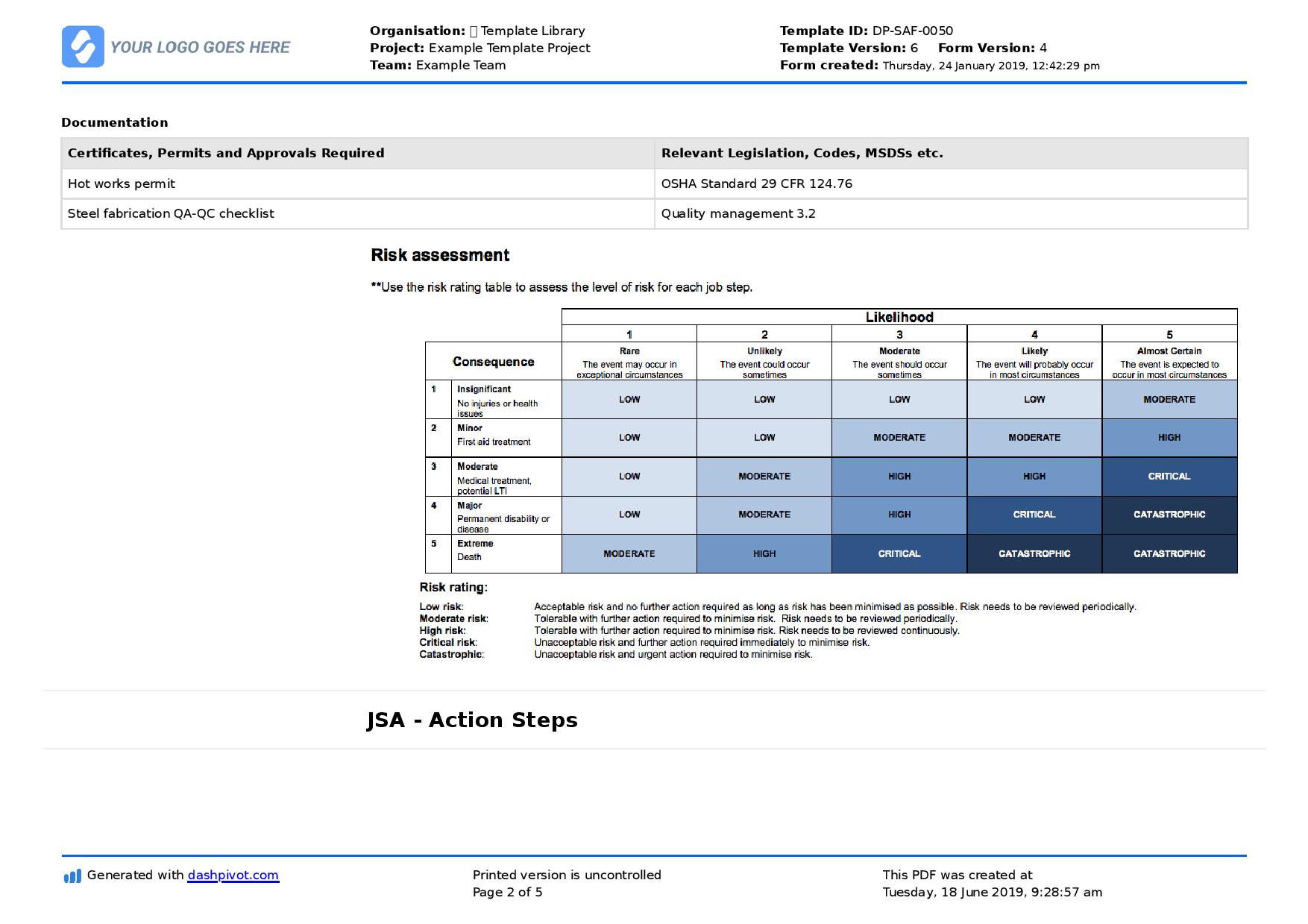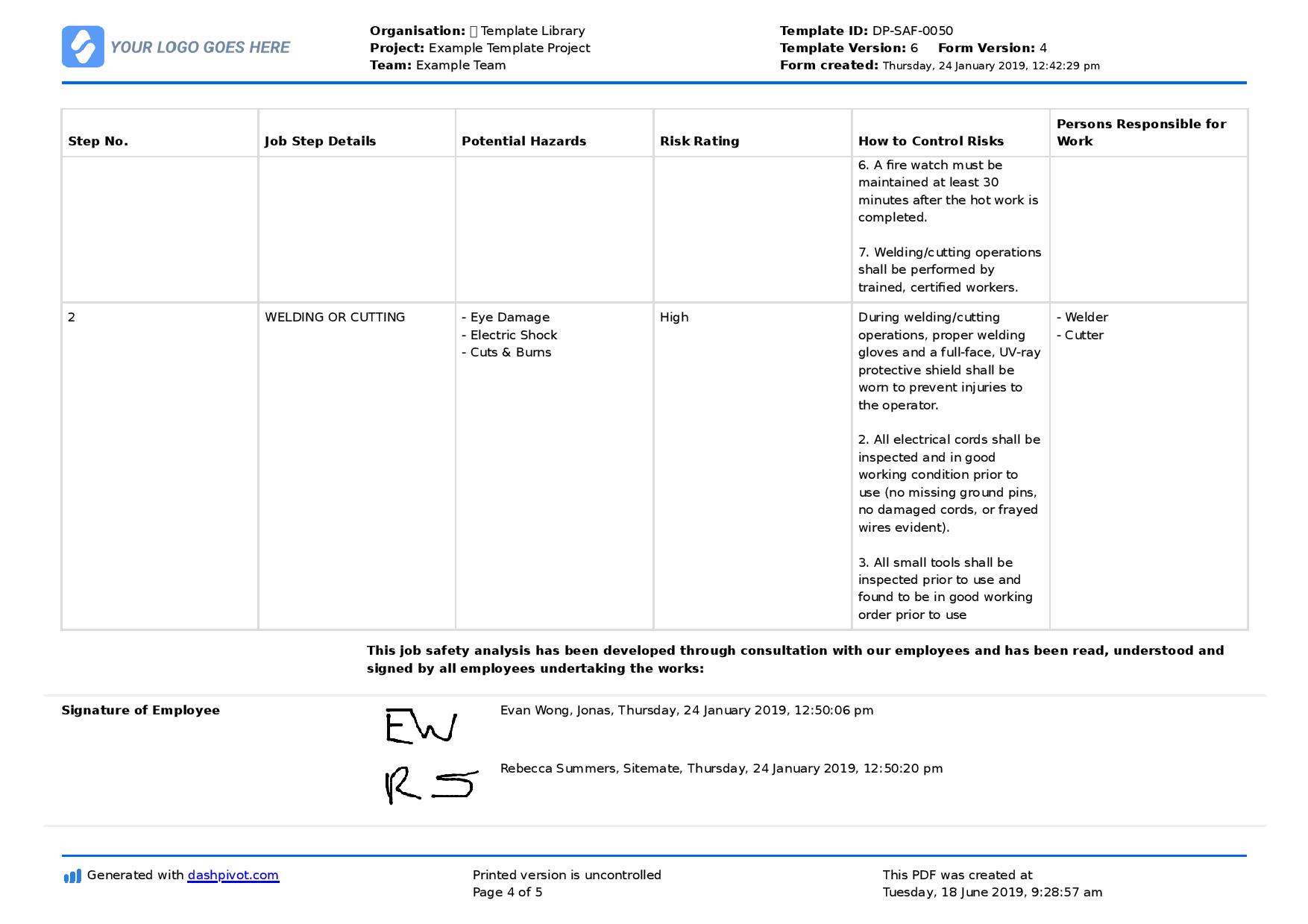Safety – JSA and SWMS
JSA and SWMS: What you need to know
In this article, we discuss two critical safety document, the JSAs and SWMS. We discuss when and why to use each each process, as well as provide some helpful tips and resources on improving both processes.

What are JSA and SWMS?
JSA and SWMS are safety processes and documents which enable workers and companies to better identify and control hazards, so that people can conduct their work more safely.
To better clarify exactly what each is, here are the formal 'definitions' of a JSA and SWMS:
Job safety analysis (JSA) -
A job safety analysis or 'JSA' is a safety procedure which helps to integrate accepted health and safety principles and practices into a specific job or task. In most cases, this job or task means a specific work assignment or activity like:
- Operating a grinder
- Using a jack hammer (see a Jack hammer JHA template here)
The most important aspect of the JSA is that it is suitable for the task being assessed. You don't want your JSA to be too broad so that it's impossible to break down the specific task, and you don't want the JSA to be too narrow, or everyone will spend all of their time assessing small tasks and trying to break them down into even smaller chunks.
Safe work method statement (SWMS) -
Unlike the JSA, a SWMS is a construction specific document and process. On a construction site, a SWMS outlines the high risk construction activities which will be carried our during work, the hazards which arise from these activities, and the measures which need to be put in place to control the risks.
A SWMS sets out the following information in regards to any high risk construction activity:
- How the work activity will be conducted in a logical sequence
- Hazards involved with that activity
- The control measures required to conduct the operation safely
We'll dive into the specific differences between JSA and SWMS below.
The purpose of JSA and SWMS
The purpose of both JSA and SWMS is to make the workplace safer.
As we discussed above, SWMS are construction industry specific, and JSA's are used most commonly in construction and other heavy industries, where there are hundreds of inherent dangers and hazards associated with doing normal work.
In these industries, companies must be proactive about safety.
They must create processes and procedures which force people to follow specific and standardised processes. These processes are usually outputted into a specific document or safety checklist, which ensures that procedure is followed every time.
The main purpose of a JSA is to ensure that the risks associated with a particular tasks have been thought about, considered and controlled.
The main purpose of a SWMS is that each person conducting the activity or operation outlined in the safe work method statement understands the accepted safety practices required to perform that job.
In simple terms, the purpose of the SWMS is to help supervisors and other workers understand the requirements associated with carrying out that high-risk construction work.
JSA and SWMS difference
There are a couple of JSA and SWMS differences which make them tangibly different. Like many industrial documents and processes, there is some overlap between the processes, especially in terms of the purpose and function, but the mechanics of the procedure make them importantly different.
As you probably gathered from the JSA definition, the main difference between the SWMS and JSA from a JSA perspective is that a JSA is created before a specific job or task is conducted.
The JSA is created specifically for that task, so that the task can be performed safely. A different job on a different day may require a specific JSA.
The key difference between a JSA and SWMS from a SWMS perspective is that SWMS are prepared for a type of dangerous work or operation which is conducted at regular intervals.
The SWMS becomes a reference document for people conducting that type of activity, and it can be refined and improved over time.
Prior to conducting that dangerous activity, workers are required to reference and review the SWMS and ensure it applies to the type of high risk work and site being worked on. If not, a new SWMS will be created which is applicable to this specific circumstance.
JSA and SWMS do interact and cross-pollinate as well. The hazards and control measures associated with performing a job or task for the first time on a project can be used to prepare a safe work method statement, which can be referenced and updated for that activity in the future. The content can be easily transferred between the two documents to save time and reduce the likelihood that important processes or hazards are missed.
You can see an example of a JSA below, which helps to show you the specifics of the JSA.
To summarise the difference between a JSA and SWMS, a SWMS is specific to the construction industry and is required for all high-risk construction work while a JSA is a one or two page form which outlines the hazards associated with a particular job or task.
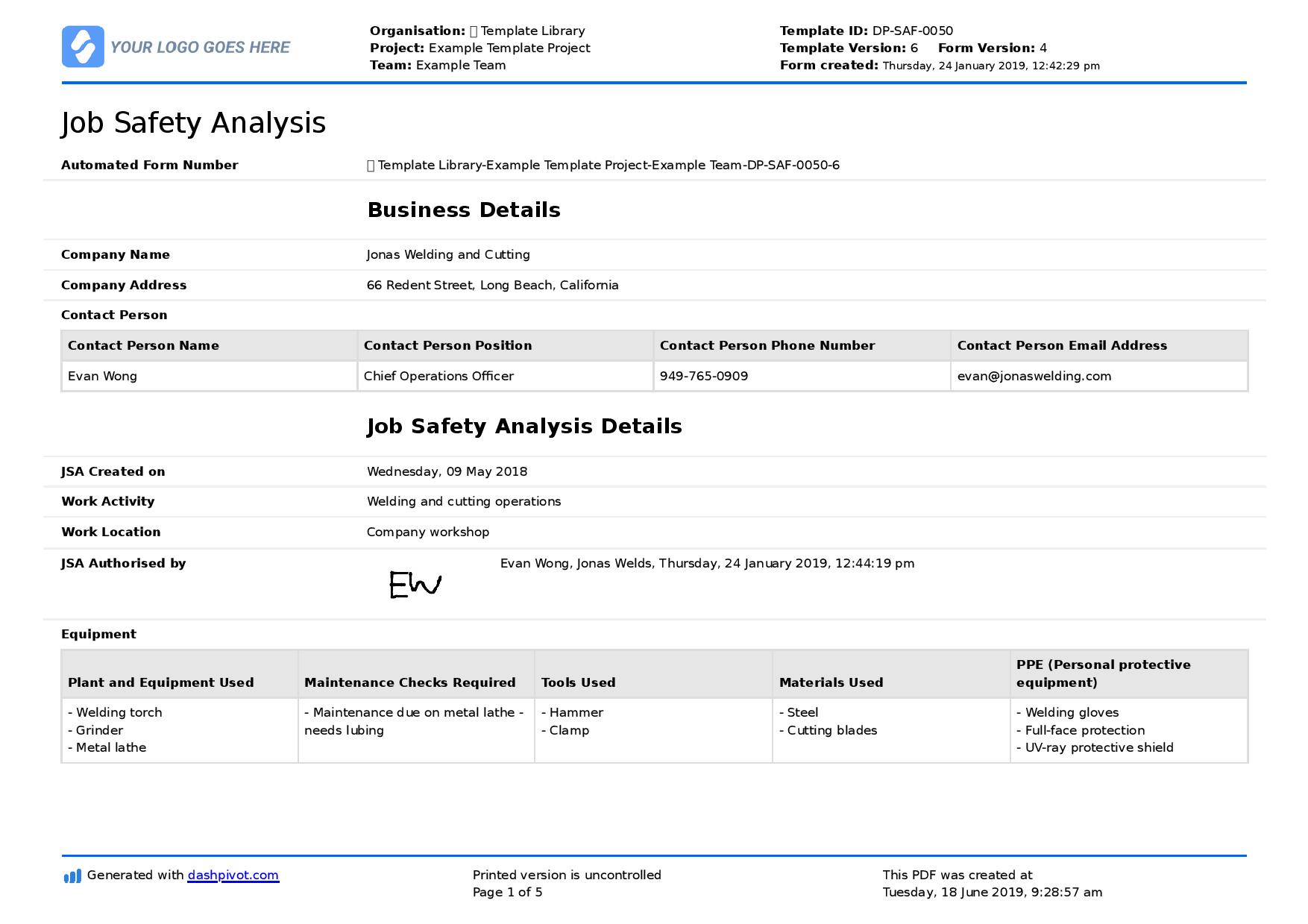
Use this JSA framework for free, and access SWMS safety forms as well.
JSA or SWMS?
Naturally, workers and companies can find themselves asking what is more important, a JSA or SWMS?
And the answer if you have been reading the rest of the article is of course that companies require both - because they are different.
A company and project will need to create and maintain SWMS documents which outline the accepted health and safety practices associated with performing any of that high-risk construction activity.
But there will also be time when a worker needs to create a job safety analysis for a specific activity. Maybe it's an activity which isn't conducted regularly so doesn't have a SWMS, or maybe it's not a typically high-risk activity but one which features some safety issues due to circumstance.
A JSA is usually completed before the development of a SWMS, but the SWMS makes those safety practices and procedures scaleable and usable to an entire company or project.
Both the JSA and SWMS are important tools in your safety arsenal, and both should be used and treated accordingly.
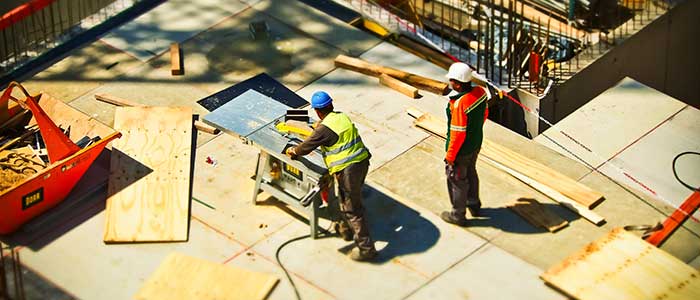
JSA form
Improve JSA completion and compliance
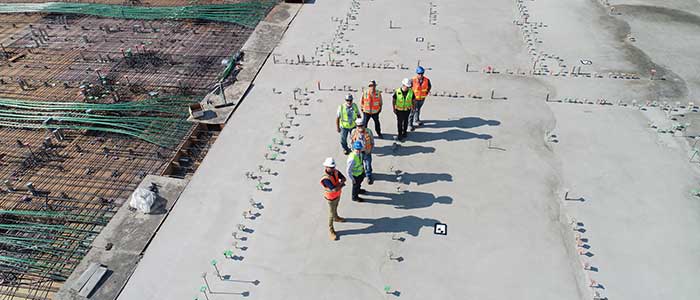
Toolbox talk
Streamline your toolbox talk meetings and records with ease
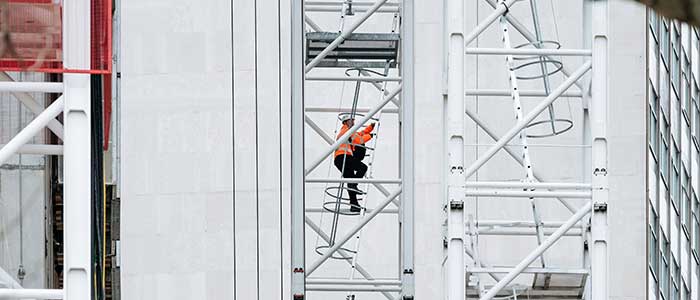
SWMS
Use this SWMS for working at heights, or apply it to other high risk activities

